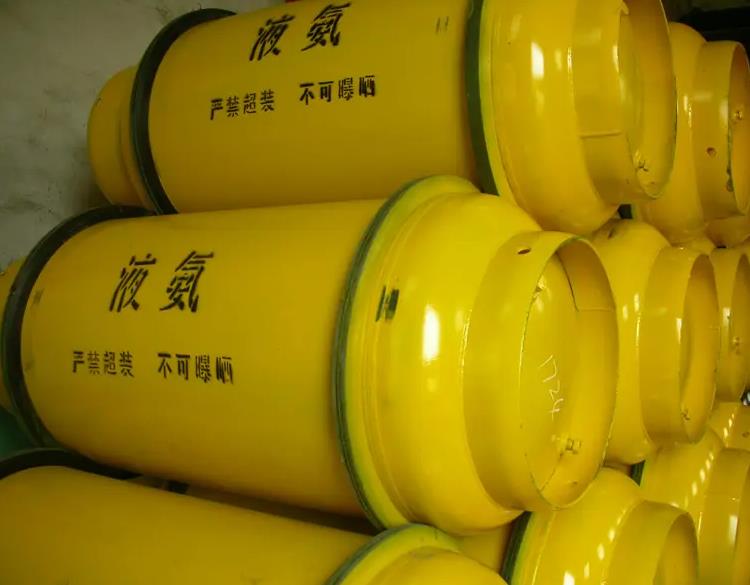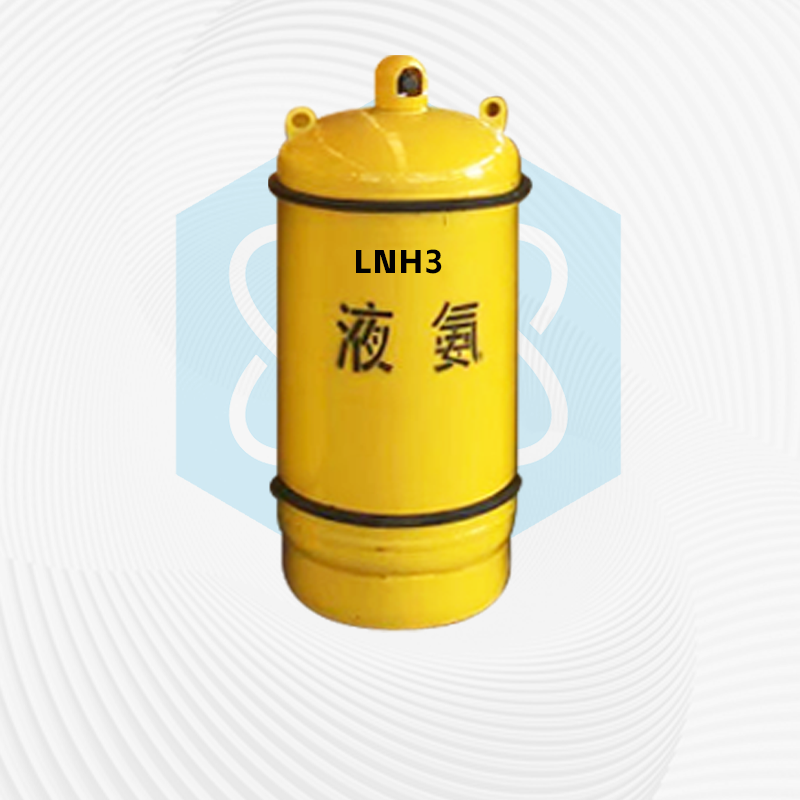液体アンモニアは主に硝酸や尿素などの化学肥料の製造に使われ、医薬品や農薬の原料としても使われます。
1. 国防産業では、ロケットやミサイルの推進剤の製造に使用されます。
2. 有機化学品のアンモニア化原料や冷媒として利用されます。
NH3 分子の孤立電子対は他の分子やイオンと配位結合する傾向があり、さまざまな形態のアンモニア錯体を生成します。[Ag (NH3) 2]+、[Cu (NH3) 4] 2+、BF3 • NH3 などの錯体はすべて NH3 と配位結合しています。
3. 液体アンモニアを800~850℃に加熱し、ニッケル系触媒の作用でアンモニアを分解し、75%のH2と25%のN2を含む水素窒素混合ガスを得る。この方法で得られるガスは優れた保護ガスである。
4. 半導体産業、冶金産業、その他保護雰囲気を必要とする産業や科学研究に幅広く応用できます。
5. 各種化学補助材料、製錬業、その他の産業で使用されます。

注:
アンモニアは接触した皮膚組織に腐食性と刺激性があり、皮膚組織から水分を吸収し、組織タンパク質を変性させ、組織脂肪を鹸化し、細胞膜構造を破壊する可能性があります。 アンモニアは溶解度が非常に高いため、主に動物や人間の上気道に刺激性と腐食性をもたらします。 皮膚、粘膜、結膜に吸着され、刺激と炎症を引き起こすことがよくあります。 呼吸繊毛を麻痺させ、粘膜上皮組織を損傷し、病原微生物が侵入しやすくなり、体の病気に対する抵抗力が弱まります。 アンモニアは通常、ガスの形で人体に吸入されます。 肺に吸入された後、アンモニアは肺胞から血流に入りやすく、ヘモグロビンと結合して酸素輸送機能を破壊します。肺胞に入った少量のアンモニアは二酸化炭素によって中和され、残りは血流に吸収されます。少量のアンモニアは汗、尿、呼吸によって体外に排出されます。短期的には、大量のアンモニアを吸入すると、涙目、のどの痛み、嗄声、咳、血痰、胸の圧迫感、呼吸困難を引き起こし、めまい、頭痛、吐き気、嘔吐、倦怠感などを伴うことがあります。重篤な場合には、肺水腫、成人呼吸窮迫症候群、呼吸器刺激症状が発生することがあります。アンモニアを過剰に吸入して血液中のアンモニア濃度が高くなると、三叉神経終末の反射作用によって心停止や呼吸停止を引き起こし、生命を危険にさらします。アンモニアに長期間さらされると、人によっては皮膚の色素沈着や指の潰瘍などの症状を引き起こすことがあります。室内空気中のアンモニアガスは、主に建築時に使用されるコンクリート添加剤から発生します。添加剤には大量のアンモニア内部物質が含まれており、温度や湿度などの環境要因の変化により、アンモニアガスに還元され、壁内で放出されます。
緊急対応:
アンモニアが人体に及ぼす生理的影響。アンモニアは強い刺激臭があり、人体に対して非常に有毒です。慢性アンモニア中毒は慢性気管支炎や肺気腫などの呼吸器疾患を引き起こす可能性があり、急性アンモニア中毒は持続的な咳や窒息として現れます。
(1)軽微な漏れ。
エリア内のすべての人員を避難させてください。蒸気の吸入や液体またはガスとの接触を防止してください。作業員は呼吸器を使用する必要があります。アンモニアが蓄積する可能性のある密閉空間への立ち入りを禁止し、換気を強化してください。安全を確保しながらのみ、漏出を阻止できます。漏出している容器は安全な場所に移動し、安全が確保された場合にのみ、圧力を解放するためにバルブを開いてください。砂やバーミキュライトなどの不活性吸収材を使用して、漏出物質を収集および吸着できます。収集した漏出物は、対応するラベルを付けた密閉容器に入れて廃棄する必要があります。
(2)漏洩量が多い。
会場内にいる防護されていない人員を全員避難させ、風上へ移動させます。漏洩処理要員は、完全密閉型の重化学防護服と空気呼吸器を着用し、個人防護措置を講じた後、漏洩箇所を噴霧水流で希釈します。水鉄砲で希釈することで、現場のアンモニアガスは徐々に消散し、火花の出ない工具を使用して漏洩箇所を封鎖します。
地方政府、「119」、地方環境保護部門、公安および交通警察部門に報告し、報告内容には、事故の部門、事故の時刻、場所、化学物質名、漏出量、危険度、死傷者の有無、事故を報告した人の氏名と電話番号を含める必要があります。
漏洩した液体アンモニアが下水道や排水路に流れ込むのを防ぐため、漏洩した液体アンモニアとの接触や交差を禁止します。換気を強化します。敷地内での喫煙と裸火は禁止されています。安全を確保しながら、液体アンモニアが漏れるのを防ぐために、漏れた容器を塞ぐかひっくり返す必要があります。水を噴霧して蒸気を抑制したり、蒸気雲の流れの方向を変えたりしますが、漏洩した液体アンモニアや漏洩源に水を直接当てることは禁止されています。漏洩が水域、下水道、地下室、または密閉された空間に入らないようにします。アンモニアが蓄積する可能性のある密閉空間への立ち入りを禁止します。清掃後、すべての保護服と装備は、保管および再利用する前に洗い流す必要があります。




